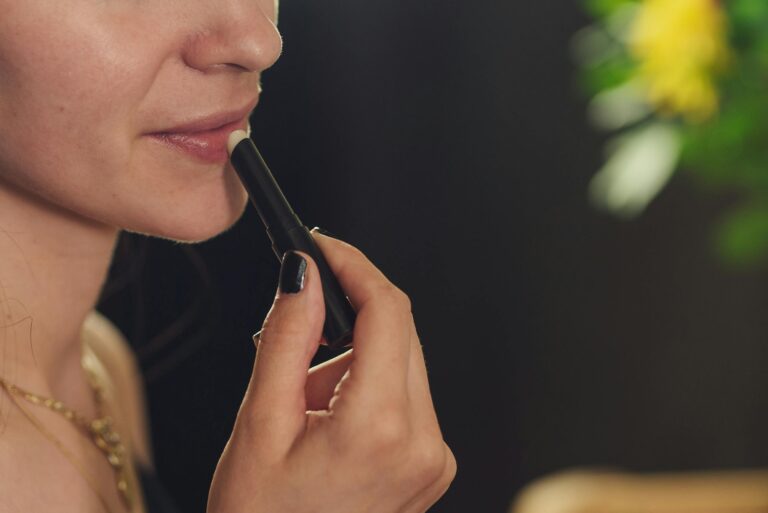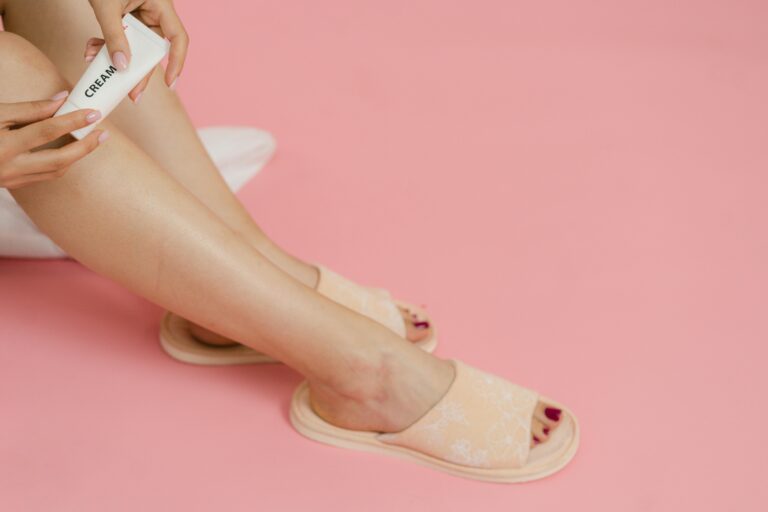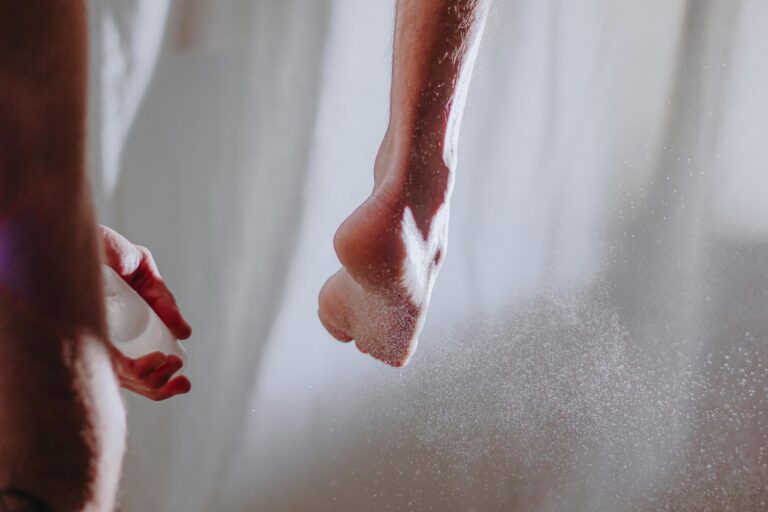Dealing with acne can be frustrating and disheartening, but there’s hope! Thanks to skincare ingredients like AHA (Alpha Hydroxy Acid), BHA (Beta Hydroxy Acid), and Niacinamide, you can take control of your acne-prone skin and achieve a clearer, healthier complexion.
In this comprehensive guide, we will explore how to effectively incorporate these powerhouse ingredients into your skincare routine to combat acne and improve your skin’s overall appearance.
Understanding AHA, BHA, and Niacinamide
Alpha Hydroxy Acid (AHA)
Alpha Hydroxy Acid is a group of exfoliating acids that work by gently dissolving the bonds between dead skin cells, promoting cell turnover, and revealing fresher, smoother skin beneath.
AHA is particularly beneficial for acne-prone skin because it helps unclog pores, reduce the appearance of acne scars and hyperpigmentation, and even out skin tone. Common types of AHAs include glycolic acid, lactic acid, and mandelic acid.
Beta Hydroxy Acid (BHA)
Beta Hydroxy Acid, primarily known as salicylic acid, is a powerful exfoliant that penetrates deep into the pores. BHA is highly effective in treating acne-prone skin due to its ability to dissolve oil and sebum, unclog pores, and prevent future breakouts.
It also possesses anti-inflammatory properties, reducing redness and swelling associated with acne. BHA is an excellent choice for individuals with oily and combination skin types.
Niacinamide
Niacinamide, also known as vitamin B3, is a versatile ingredient that offers multiple benefits for acne-prone skin. It helps regulate sebum production, reducing excessive oiliness and minimizing the occurrence of breakouts.
Niacinamide also possesses anti-inflammatory properties, soothing irritation and redness caused by acne. Additionally, it can help minimize the appearance of enlarged pores, leading to a smoother, more refined complexion.
Using AHA, BHA, and Niacinamide into Your Skincare Routine
To make the most of these acne-fighting ingredients, follow these steps:
Patch Test and Gradual Introduction
Before incorporating any new skincare product into your routine, it’s essential to patch-test it first. Apply a small amount of the product to a discreet area of your skin and observe for any adverse reactions. If no irritation occurs, gradually introduce the product into your routine to allow your skin to adjust.
Cleansing and Preparing the Skin
Start your skincare routine with a gentle cleanser suitable for acne-prone skin. Look for cleansers that are non-comedogenic and formulated with soothing ingredients like aloe vera or green tea extract.
Cleansing removes dirt, excess oil, and impurities, creating a clean canvas for the subsequent application of AHA, BHA, and Niacinamide.
AHA and BHA Application
Choose the right concentration and formulation of AHA and BHA based on your skin’s sensitivity and needs. Beginners may opt for lower concentrations, while those with more resilient skin can tolerate higher strengths.
Start by applying AHA or BHA once or twice a week and gradually increase the frequency as your skin adjusts. Apply the product after cleansing and before moisturizing, allowing it to penetrate the skin effectively. It’s important to note that AHA and BHA increase sun sensitivity, so always follow up with broad-spectrum sunscreen during the day.
Niacinamide Application
Niacinamide is a versatile ingredient that can be used both day and night. Look for serums or moisturizers containing a concentration of around 2-5% for optimal results.
Apply a pea-sized amount onto clean, dry skin, gently massaging it in until fully absorbed. Niacinamide can be used alongside other active ingredients and layered with moisturizers or sunscreen.
Potential Combinations and Layering
AHA, BHA, and Niacinamide Together
While AHA, BHA, and Niacinamide can be used in combination, it’s important to start with a cautious approach. Begin by incorporating one ingredient at a time, allowing your skin to adjust before introducing the next.
This helps prevent over-exfoliation and potential irritation. A common approach is to use AHA or BHA in the evening and Niacinamide in the morning. Always pay attention to your skin’s response and adjust your routine accordingly.
Combining with Other Acne-Fighting Ingredients
In addition to AHA, BHA, and Niacinamide, other acne-fighting ingredients like salicylic acid, benzoyl peroxide, or retinoids can be incorporated into your routine. However, exercise caution when combining multiple active ingredients to avoid skin irritation.
It’s best to introduce these ingredients gradually and observe how your skin responds. If you experience excessive dryness or irritation, consider adjusting the frequency or concentration of each ingredient.
General Tips for Acne-Prone Skin
Achieving clear, healthy skin requires a holistic approach. Here are some general tips to complement your skincare routine:
Consistency and Patience
Consistency is key when it comes to skincare. Stick to your routine and give your skin time to adapt to new products. Results may not be immediate, so be patient and persistent.
Avoiding Triggers and Irritants
Identify potential triggers that exacerbate your acne, such as certain foods, stress, or harsh skincare products. Avoiding these triggers can help minimize breakouts and irritation.
Maintaining a Healthy Lifestyle and Diet
A well-balanced diet rich in fruits, vegetables, and whole grains can contribute to healthier skin. Stay hydrated, exercise regularly, and get sufficient sleep to support your skin’s overall health.
Conclusion
Using AHA, BHA, and Niacinamide into your skincare routine can be a game-changer for acne-prone skin. These ingredients offer a multitude of benefits, including exfoliation, pore unclogging, oil regulation, and inflammation reduction.
However, it’s crucial to introduce them gradually, pay attention to your skin’s response, and adjust your routine accordingly. If you’re unsure about the best approach for your skin, consult a dermatologist for personalized advice and guidance.
FAQs
1. Can I use AHA, BHA, and Niacinamide if I have sensitive skin?
Yes, individuals with sensitive skin can still use AHA, BHA, and Niacinamide. However, it’s important to start with lower concentrations and perform a patch test to ensure compatibility.
2. Can I use AHA, BHA, and Niacinamide while pregnant or breastfeeding?
It’s advisable to consult with your healthcare provider before incorporating new skincare ingredients into your routine during pregnancy or breastfeeding.
3. How long does it take to see results from using AHA, BHA, and Niacinamide?
Results vary depending on individual factors and the severity of your acne. It may take several weeks to notice improvements in skin texture, clarity, and reduction in breakouts.
4. Can I use AHA, BHA, and Niacinamide if I have dry skin?
Yes, individuals with dry skin can still benefit from these ingredients. However, it’s important to moisturize adequately and consider using lower concentrations of AHA and BHA to prevent excessive dryness.
5. Should I still use sunscreen when using AHA, BHA, and Niacinamide?
Absolutely! AHA, BHA, and Niacinamide can increase sun sensitivity, so it’s crucial to apply a broad-spectrum sunscreen with a minimum SPF 30 daily, even on cloudy days.



